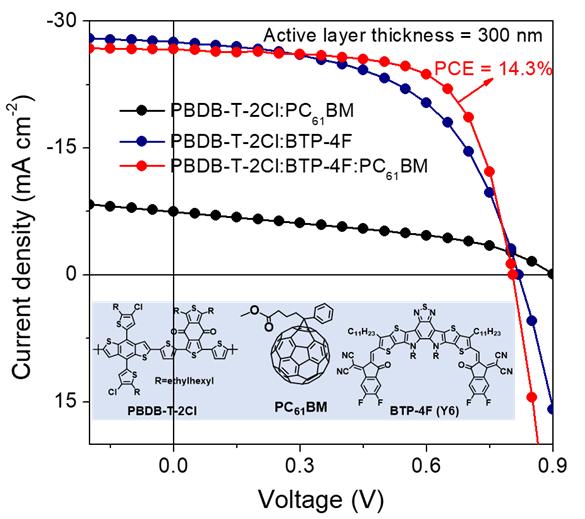
Credit: ©Science China Press
Organic solar cells (OSCs) have drawn great attention due to their advantages of making large area and flexible solar panels through the low-cost solution coating methods. Recently, the single-junction OSCs with over 16% power conversion efficiency (PCE) have been reported. However, photovoltaic performance of these cells is very sensitive to the variation in the active layer thickness, which has been recognized as a big challenge for practical application of OSCs.
The photovoltaic performance of OSCs is determined by open-circuit voltage (VOC), short-circuit current density (JSC) and fill factor (FF). For the current high efficiency non-fullerene-based system, the efficiency of OSCs usually shows a sharp drop in FF upon increasing the thickness of the active layer. Such FF drops are generally caused by poor and imbalanced charge transport, which results in enhanced bimolecular charge recombination and the formation of space charge in thicker films.
Very recently, Professor Jianhui Hou’s group in Institute of Chemistry Chinese Academy of Sciences demonstrated a thick-film (300 nm) ternary OSC with a power conversion efficiency of 14.3%. This excellent photovoltaic performance is achieved by introducing phenyl-C61-butyric-acid-methyl ester (PC61BM) into a PBDB-T-2Cl: BTP-4F host blend. They found that the addition of PC61BM is helpful for improving the hole and electron mobilities, and thus facilitates charge transport in the thick active layers, leading to the improved efficiencies of OSCs. Their results illustrate that introducing fullerene derivative as a third component is a facile and effective strategy to realize efficient thick-film OSCs.
###
This work was supported by the National Natural Science Foundation of China (21835006, 21704004, 91633301, 51673201), the Chinese Academy of Sciences (KJZD-EW-J01), the Innovation Project supported by Beijing National Laboratory for Molecular Sciences (BNLMS-CXXM-201903)
See the article: Ma L, Xu Y, Zu Y, Liao Q, Xu B, An C, Zhang S, Hou J. A ternary organic solar cell with 300 nm thick active layer shows over 14% efficiency. Sci. China Chem., 2019, 62, DOI: 10.1007/s11426-019-9556-7.
https:/
Media Contact
Shaoqing Zhang
[email protected]
Related Journal Article
http://dx.




